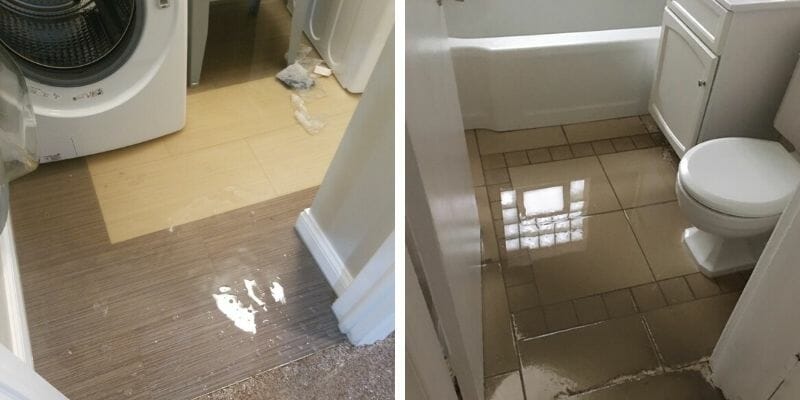Are you currently searching for know-how concerning How to Repair and Prevent Bathroom Water Damage??

Water damage typically takes place in the shower room due to the water made use of daily. Often, the damages could be a little mold and mildew from the shower. Other times, it's substantial damage on your flooring. Whatever it is, it is always excellent to understand the reason as well as prevent it prior to it takes place.
This guide will undergo some of the usual root causes of water damage in the washroom. We will likewise analyze what you can do to stop these reasons from damaging your bathroom. Let's dive in.
5 Common Root Causes Of Water Damage in Bathrooms
These are the common reasons you would certainly have water damage in your shower rooms as well as how you can find them:
Burst or Leaking Pipelines
There are many pipes carrying water to different parts of your bathroom. Some pipes take water to the bathroom, the sink, the taps, the shower, as well as numerous other places. They crisscross the small location of the washroom.
From time to time, these pipes can obtain rusty as well as burst. Other times, human activity can trigger them to leakage. When this happens, you'll find water in the edges of your shower room or on the wall.
To find this, look out for gurgling wall surfaces, mold and mildews, or mildew. Call an expert emergency plumbing to fix this when it takes place.
Fractures in your wall tilesv
Bathroom wall surface ceramic tiles have been specially designed for that objective. They secure the wall surface from moisture from people taking showers. However, they are not undestroyable.
Sometimes, your bathroom wall surface tiles crack as well as enable some moisture to permeate into the wall surface. This might potentially damage the wall surface if you do not take any kind of action. If you discover a split on your wall surface tiles, fix it instantly. Do not wait till it damages your wall.
Overflowing toilets and sinks
As people, sometimes we make mistakes that could trigger some water damage in the bathroom. For example, leaving your sink tap on might create overruning as well as damage to other parts of the shower room with moisture.
Likewise, a defective toilet can create overflowing. For example, a busted bathroom manage or various other parts of the cistern. When this takes place, it could harm the flooring.
As soon as you observe an overflowing sink or bathroom, call a plumbing to aid deal with it quickly.
Roofing Leakages
Often, the problem of water damage to the shower room could not come from the shower room. As an example, a roofing system leak can create damage to the shower room ceiling. You can spot the damage done by checking out the water discolorations on the ceiling.
If you find water spots on your ceiling, inspect the roof covering to see if it's damaged. Then, call an expert to assist address the concern.
Excess Moisture
It's amazing to have that lengthy shower and also dash water while you hem and haw and act like you're doing, however occasionally these acts can cause water damage to your bathroom.
Sprinkling water around can trigger water to visit edges and also develop mold and mildews. Enjoy just how you spread out excess dampness around, and also when you do it, clean it up to prevent damages.
Final thought
Water damage to your shower room can be annoying. Nevertheless, you can manage it if you protect against several of the reasons stated in this overview. Call a specialist emergency situation plumbing technician if you see any severe damages.
How to Repair a Water-Damaged Wall in the Bathroom
All you need to know to repair bathroom wall water damage – from identifying the water source to finishing the repair professionally. If you don’t act quickly to resolve a water damage problem, you could find that it develops into a mold issue and/or cause structural damage to your home. Follow this guide to repair your bathroom before it's too late.
All you need to know to repair bathroom wall water damage
Water damage is a common household problem, and one that, if left unrepaired, can quickly lead to structural problems and health issues. The two most likely rooms where water damage may occur is the bathroom and the kitchen – where water is used often and there is high humidity.
What is water damage?
It is easy to think of water damage as caused by a flood or leaking tap or burst water pipe. However, when water damage is assessed, there are three main categories into which water falls (as classified by the American National Standards Institute). These categories are defined as:
Category 1 Water – ‘Clear Water’
This is sanitary water. There is usually no major threat to health by washing with this water, drinking it, or inhaling if it is streaming. Most water that enters your home will be category 1 water, while most water leaving your home will be either category 2 or 3 water. It may also come from melting snow, rainwater and water tanks.
Damage caused by this type of water can usually be repaired or restored, though this doesn’t mean that there are no potential health issues.
Category 2 Water – ‘Grey Water’
This is contaminated water – sometimes considerably so – and will cause illness if consumed or if it comes into contact with your skin. Water damage in this category is often caused by overflows from toilet bowls, and damage to washing machines and dishwashers. While damaged items might still be repaired or restored after damage by grey water, it is more difficult and more expensive to do so.
If the water damage in your home has been caused by grey water, it is advisable to have repairs made by professionals.
Over time, grey water will deteriorate and become black water.
Category 3 Water – ‘Black Water’
Category 3 water, also known as black water, is highly contaminated and a great risk to health. This may contain raw sewage, heavy metals, and other toxic substances. It will smell terrible.
If this is the water that has caused damage in your bathroom, do not touch it. Stop the water flowing if possible, seal the room and call the experts: it really isn’t worth the risk of ill health and disease that could be fatal. It is very unlikely that items can be repaired or restored if they have been damaged by black water.
https://www.porterscleaning.com/blog/how-to-repair-a-water-damaged-wall-in-the-bathroom/

How to Repair a Water-Damaged Wall in the Bathroom
All you need to know to repair bathroom wall water damage – from identifying the water source to finishing the repair professionally. If you don’t act quickly to resolve a water damage problem, you could find that it develops into a mold issue and/or cause structural damage to your home. Follow this guide to repair your bathroom before it's too late.
All you need to know to repair bathroom wall water damage
Water damage is a common household problem, and one that, if left unrepaired, can quickly lead to structural problems and health issues. The two most likely rooms where water damage may occur is the bathroom and the kitchen – where water is used often and there is high humidity.
What is water damage?
It is easy to think of water damage as caused by a flood or leaking tap or burst water pipe. However, when water damage is assessed, there are three main categories into which water falls (as classified by the American National Standards Institute). These categories are defined as:
Category 1 Water – ‘Clear Water’
This is sanitary water. There is usually no major threat to health by washing with this water, drinking it, or inhaling if it is streaming. Most water that enters your home will be category 1 water, while most water leaving your home will be either category 2 or 3 water. It may also come from melting snow, rainwater and water tanks.
Damage caused by this type of water can usually be repaired or restored, though this doesn’t mean that there are no potential health issues.
Category 2 Water – ‘Grey Water’
This is contaminated water – sometimes considerably so – and will cause illness if consumed or if it comes into contact with your skin. Water damage in this category is often caused by overflows from toilet bowls, and damage to washing machines and dishwashers. While damaged items might still be repaired or restored after damage by grey water, it is more difficult and more expensive to do so.
If the water damage in your home has been caused by grey water, it is advisable to have repairs made by professionals.
Over time, grey water will deteriorate and become black water.
Category 3 Water – ‘Black Water’
Category 3 water, also known as black water, is highly contaminated and a great risk to health. This may contain raw sewage, heavy metals, and other toxic substances. It will smell terrible.
If this is the water that has caused damage in your bathroom, do not touch it. Stop the water flowing if possible, seal the room and call the experts: it really isn’t worth the risk of ill health and disease that could be fatal. It is very unlikely that items can be repaired or restored if they have been damaged by black water.
https://www.porterscleaning.com/blog/how-to-repair-a-water-damaged-wall-in-the-bathroom/
Do you appreciate more info about How to Repair and Prevent Bathroom Water Damage?? Try leaving feedback below. We would be interested to find out your opinion about this blog entry. We are looking forward that you come back again later on. Sharing is nice. Helping people is fun. Thank you for taking the time to read it.
For quick relief, contact!